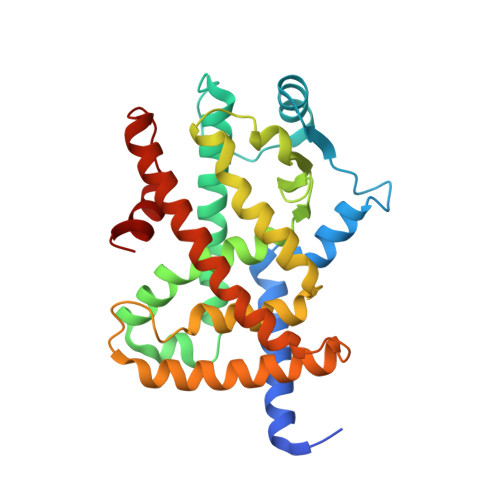Atomic structure of mutant PPARgamma LBD complexed with 15d-PGJ2: novel modulation mechanism of PPARgamma/RXRalpha function by covalently bound ligands
Waku, T., Shiraki, T., Oyama, T., Morikawa, K.(2009) FEBS Lett 583: 320-324
- PubMed: 19101554
- DOI: https://doi.org/10.1016/j.febslet.2008.12.017
- Primary Citation of Related Structures:
2ZVT - PubMed Abstract:
15-deoxy-Delta(12,14)-prostaglandin J(2) (15d-PGJ(2)) activates a nuclear receptor heterodimer, peroxisome proliferators-activated receptor gamma (PPARgamma)/ retinoid X receptor (RXRalpha) through covalent binding to Cys285 in PPARgamma ligand-binding domain (LBD). Here, we present the 1.9A crystal structure of C285S mutant LBD complexed with 15d-PGJ(2), corresponding to the non-covalently bound state. The ligand lies adjacent to a hydrogen-bond network around the helix H2 and the nearby beta-sheet. Comparisons with previous structures clarified the relationships between PPARgamma function and conformational alterations of LBD during the process of covalently binding ligands, such as 15d-PGJ(2), and thus suggested a mechanism, by which these ligands modulate PPARgamma/RXRalpha function through conformational changes of the loop following helix H2' and the beta-sheet.
- The Takara-Bio Endowed Division, Department of Biomolecular Recognition, Institute for Protein Research, Osaka University, Open Laboratories of Advanced Bioscience and Biotechnology, 6-2-3, Furuedai, Suita, Osaka 565-0874, Japan.
Organizational Affiliation:

















